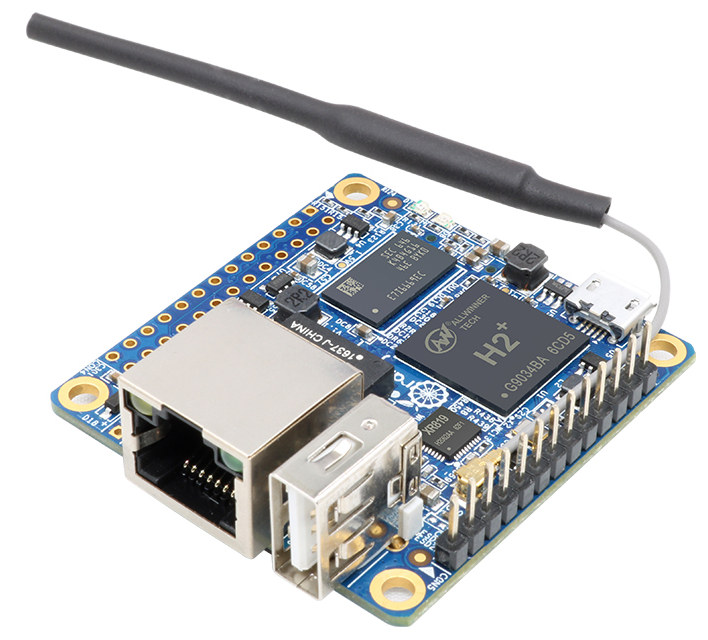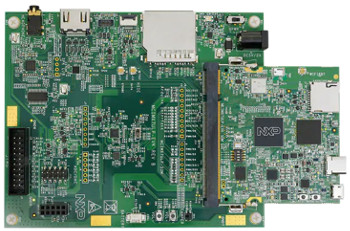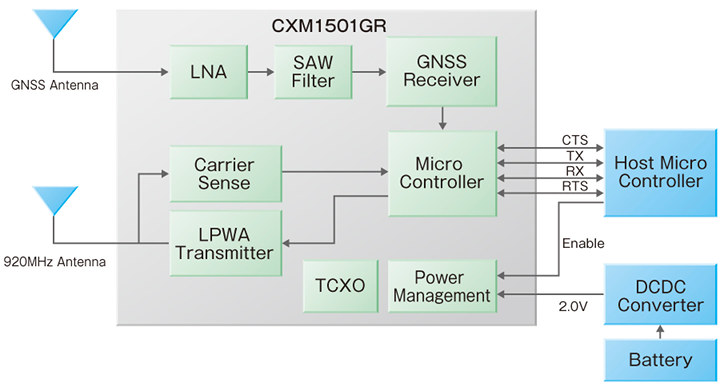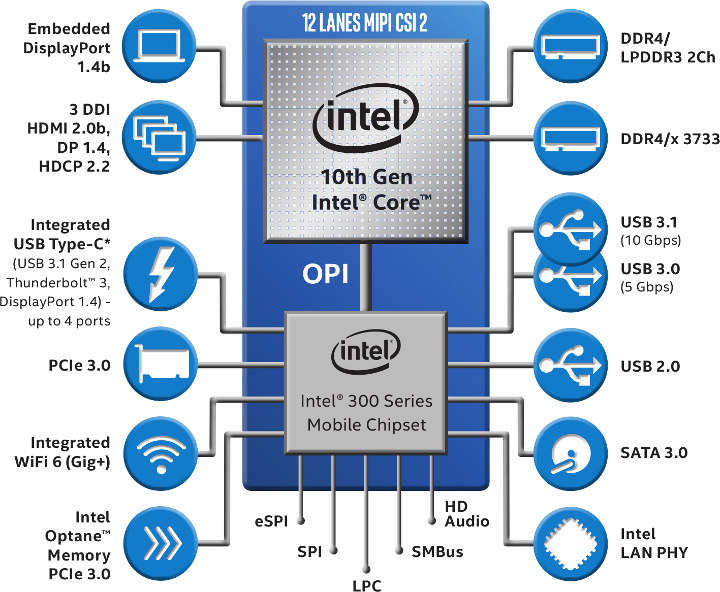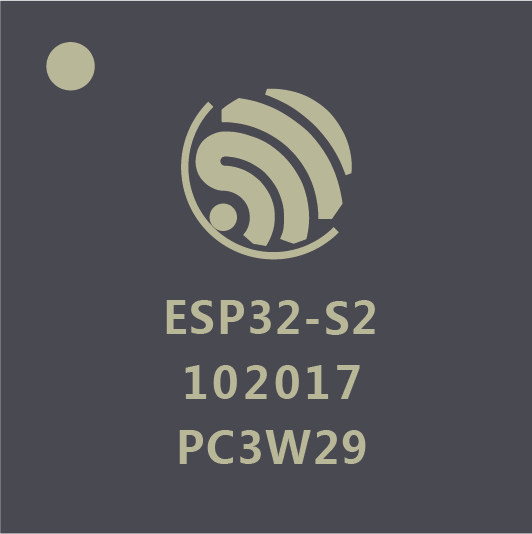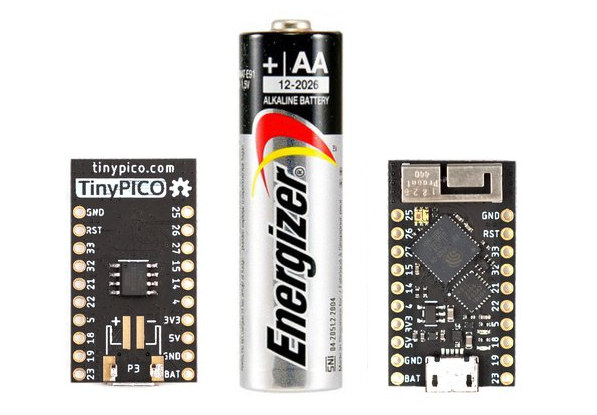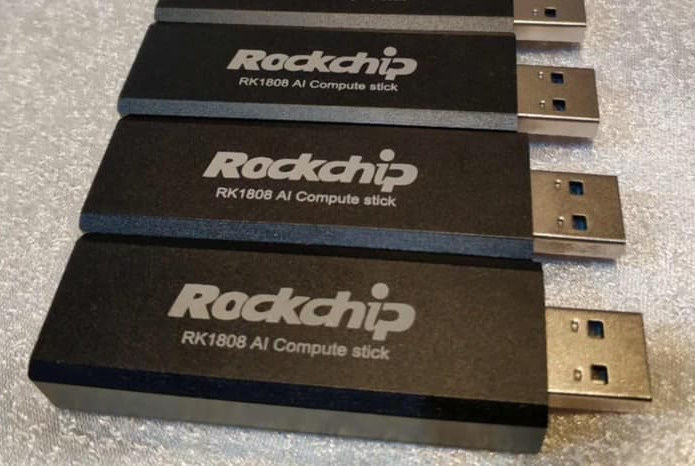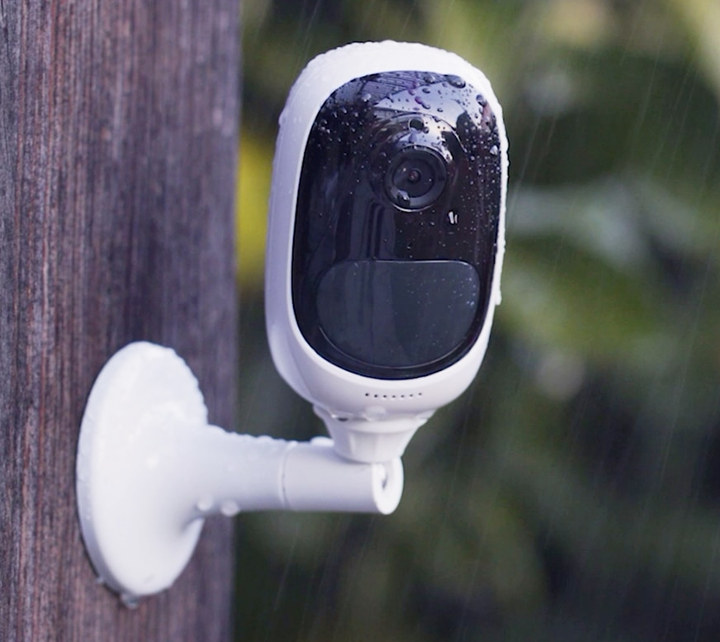Orange Pi Zero is a cool little Arm Linux board based on Allwinner H2+ processor for headless applications requiring WiFi and/or Ethernet that was first launched in November 2016 for $7 and up. It was not launched without controversy, as first users had various issues with the Allwinner XR819 WiFi module, but I had no such problem when I made an Orange Pi Zero Google Assistant smart speaker. Nevertheless, Shenzhen Xunlong Software is about to launch a newer version of the board – Orange Pi Zero LTS -, with the same specifications, but improvements in the design in order to reduce power consumption, and lower the board’s temperature. As the name implies, the company will commit to long term support (i.e. long term availability) for the board, but they did not tell me for how many years. Orange Pi Zero LTS v1.5 specifications: SoC – Allwinner H2+ quad-core Cortex A7 […]
NXP i.MX 7ULP Enters Mass-Production, EVK and Systems-on-Module Announced
Last year, we wrote about F&S Elektronik Systeme PicoCORE MX7 system-on-module (SoM) powered by NXP i.MX 7ULP processor manufactured with a 28nm FD-SOI process, and that was announced a year earlier. The official launch of the module was planned for Q3 2018, but there have been some delays as LinuxGizmos reports NXP has only started mass production of their i.MX7 ULP this June. With the official launch of i.MX 7ULP, the company also introduced the official i.MX 7ULP Evaluation Board (MCIMX7ULP-EVK) as showcased on Element14’s community and several other companies announced i.MX 7ULP systems-on-modules. Benefits of NXP i.MX 7ULP Processor The i.MX7 ULP family of processors is an extremely power-efficient series, that is utilizing lower power for more functions. The SoC is being touted as the most power-efficient processor that can be obtained that also houses a 3D GPU. Although like the i.MX7, the i.MX 7ULP combines both Cortex-A7 and […]
Sony CXM1501GR ELTRES LPWAN Module Promises a Range of over 100 Km
While there are many LPWAN (Low Power Wide Area Network) standards, three appear to dominate the news namely LoRaWAN, SigFox, and 3GPP NB-IoT/eMTC. They all offer long range and up to 10-year of battery life enabled by the use of low bitrate which is fast enough to send sensor data. We can now add another LWPAN standard to the list, as Sony has developed ELTRES wireless communication standard suitable for IoT networks, and announced their CXM1501GR ELTRES module with a range of over 100km, even while traveling at 100km/h. Key features and specifications: ELTRES Connectivity Antenna radiated power – 20mW Communication direction – Uplink only Frequency – 923.6 MHz to 928.0 MHz (23-channel frequency hopping) Main modulation system – π/2 Shift BPSK Sub-modulation system – Linear chirp modulation Transmission system – Four repeated transmissions of 0.4 sec or shorter packets Reduction of interference with other systems – CSMA (Carrier Sense […]
9W Intel Ice Lake Y-Series Processors Coming with Gen11 Graphics, 10nm Process
Intel has provided a few more details about their upcoming Intel Ice Lake Y-Series processor that will succeed their Amber Lake Y-Series family comprised of Core m, and Core i5/i7 processors with 5W to 7W TDP. Ice Lake Y-Series processor will come with the latest Intel Gen11 graphics with up to 64 EU (Execution Units), have a higher 9W TDP, configurable up to 12 Watts, and be manufactured with Intel’s 10nm process. Highlights of Intel Ice Lake Y-Series processors: CPU – 10nm+ quad-core processor, 14nm Platform Controller Hub (PCH ) GPU – Gen 11 Intel Graphics Engine, up to 64 EUs; Open GL 4.5, DirectX 12, and OpenCL 2.2 API support AI – Intel GNA (Gaussian Network Accelerator) Memory I/F – LPDDR4/x-3733 Camera – IPU4p: 16MP, 4K30, 4x cameras, RGB+IR camera Video Output eDP 1.4b up to 4K120/5K60 (10-bit) resolution DisplayPort 1.4 up to 4K120/5K60 (10-bit) resolution HDMI 2.0b up […]
Espressif ESP32-S2 Secure WiFi MCU Comes with an Xtensa LX7 Core @ 240 MHz
Espressif Systems has unveiled a new ESP32 WiFi MCU based on Cadence (previously Tensilica) Xtensa LX7 core instead of the usual Xtensa LX6 core(s). ESP32-S2 is powered by a single Xtensa LX7 core clocked at 240 MHz, supports Wi-Fi HT40 @ 2.4 GHz, and provides up to 43 GPIOs. Espressif ESP32-S2 specifications: CPU – Cadence Xtensa single-core 32-bit LX7 microcontroller @ up to 240 MHz, and ultra-low-power co-processor System Memory – 320 kB SRAM, external SPIRAM support up to 128 MB in total, 16 KB RTC memory Storage – 128 kB ROM, up to 1 GB of external flash support Connectivity Wi-Fi 802.11 b/g/n 1×1 transmit and receive with HT40 support with data rate up to 150 Mbps Support for TCP/IP networking, ESP-MESH networking, TLS 1.0, 1.1 and 1.2 and other networking protocols over Wi-Fi Support Time-of-Flight (TOF) measurements with normal Wi-Fi packets I/O & peripherals 43x programmable GPIOs 14x […]
Low Power TinyPICO ESP32 Board Ships with Micropython (Crowdfunding)
There are so many ESP32 boards available now, so why bother with another ones. Some of the key selling points of TinyPICO are that it is really small at 32 x 18 mm, it’s easy to use out of the box with MicroPython firmware pre-loaded, and supports LiPo batteries with an optimized power path for low-power battery usage. The developer, named Unexpected Maker, also provides various shields for TinyPICO adding a display, sensors, an audio amplifier, an RTC, Grove headers, and more. TinyPICO board specifications: System-in-Package – Espressif Systems ESP32-PICO-D4 SiP with ESP32 dual-core processor operating at 240 MHz, 4 MB SPI flash External System Memory – 4 MB PSRAM Connectivity – 2.4 GHz WiFi 4 802.11b/g/n, Bluetooth 4.2 LE, 3D antenna Expansion – 14x GPIO broken out to standard pitch headers Debugging / Programming – USB + serial/UART for programming Misc – Power (red) & charge (orange) LED’s, APA102 […]
Rockchip RK1808 AI Compute Stick Launched with Linux SDK
Rockchip RK1808 looks like a nifty and inexpensive little chip for artificial intelligence applications delivering up to 3.0 TOPS at low power, and the company has already released documentation and a Linux SDK with Caffe and Tensorflow framework support for the chip. So the main hurdle now is to get hardware to play with. Some people are selling (samples?) of the official RK1808-EVB on Taobao, but it costs close to $500 US. There’s still no RK1808 development board, but Rockchip has discreetly launched the RK1808 AI Compute Stick a few weeks ago. RK1808 AI Compute Stick specifications: SoC – Rockchip RK1808 dual core Cortex-A35 processor with NPU AI inference performance – 3 TOPS for INT8, 300 GOPS for INT16, 100 GOPS for FP16 Video – 1080p60 H.264 decoding, 1080p30 H.264 encoding Camera, ISP – 2MP camera support, ISP with BT.601/656/1120 support Host Interface – USB 3.0 port Power Supply – […]
$100 Reolink Argus 2 is a Wire-Free IP Camera with Optional Solar Panel
This morning I had a look at battery-powered IP cameras since they avoid the hassle of wiring power and/or Ethernet around the house. I could remember I covered Immedia Blink IP camera with up to 2-year battery life back in 2014, and the company did very well since it got acquired by Amazon, and Blink IP security camera is now sold on Amazon US for $99.99 and up. It’s probably one of the best, if not the best options, for low-cost battery-powered cameras but the problem is that they only ship to a limited number of countries. Last year, there was a new entrant with Eufy Evercam outdoor IP camera with up to one year of battery life, but again it’s not easy to purchase from overseas, and the price starts at $279.99 for a single camera system. I also covered a solar and battery powered IP camera made by […]


